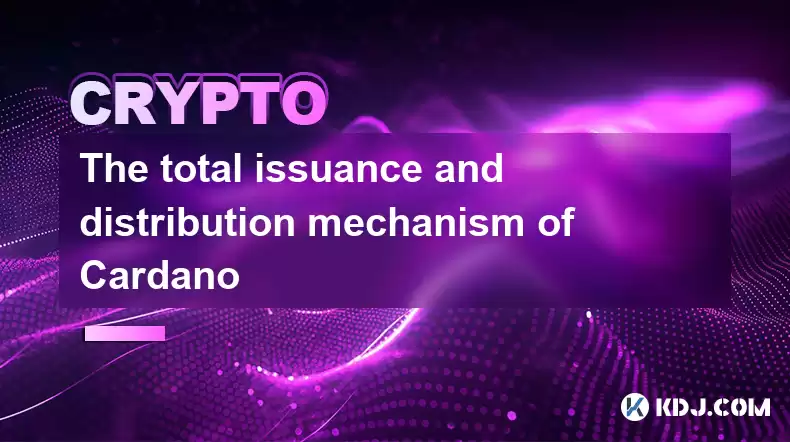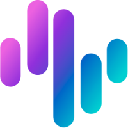-
 Bitcoin
Bitcoin $117900
-2.85% -
 Ethereum
Ethereum $4559
-2.84% -
 XRP
XRP $3.068
-5.67% -
 Tether USDt
Tether USDt $1.000
0.02% -
 BNB
BNB $836.7
-0.81% -
 Solana
Solana $193.2
-2.38% -
 USDC
USDC $0.9998
0.00% -
 TRON
TRON $0.3591
-0.32% -
 Dogecoin
Dogecoin $0.2238
-7.20% -
 Cardano
Cardano $0.9090
4.71% -
 Chainlink
Chainlink $22.55
-4.36% -
 Hyperliquid
Hyperliquid $44.78
-2.41% -
 Sui
Sui $3.771
-4.47% -
 Stellar
Stellar $0.4199
-6.18% -
 Bitcoin Cash
Bitcoin Cash $587.8
-5.02% -
 Ethena USDe
Ethena USDe $1.001
-0.01% -
 Hedera
Hedera $0.2493
-5.06% -
 Avalanche
Avalanche $23.66
-5.54% -
 Litecoin
Litecoin $121.0
-6.80% -
 Toncoin
Toncoin $3.383
-2.39% -
 UNUS SED LEO
UNUS SED LEO $9.287
0.47% -
 Shiba Inu
Shiba Inu $0.00001286
-6.48% -
 Uniswap
Uniswap $10.94
-9.06% -
 Polkadot
Polkadot $3.979
-5.53% -
 OKB
OKB $96.24
-3.88% -
 Dai
Dai $0.9997
0.00% -
 Bitget Token
Bitget Token $4.570
-4.16% -
 Cronos
Cronos $0.1510
-8.87% -
 Ethena
Ethena $0.7251
-6.96% -
 Aave
Aave $310.8
-4.73%
The total issuance and distribution mechanism of Cardano
Cardano's 45 billion ADA supply is distributed via a multi-phased approach, including initial allocations, public sales, staking rewards, and treasury operations, prioritizing transparency and community involvement for long-term sustainability.
Mar 10, 2025 at 02:26 pm

Key Points:
- Cardano's total supply is capped at 45 billion ADA.
- ADA distribution is governed by a multi-stage, phased approach.
- A significant portion was allocated to the development team, research, and reserves.
- Stake pools play a crucial role in ADA distribution and network security.
- Ongoing distribution continues through staking rewards and treasury operations.
- Transparency and community involvement are central to Cardano's distribution model.
The Total Issuance and Distribution Mechanism of Cardano
Cardano (ADA), a proof-of-stake (PoS) blockchain platform, employs a meticulously planned total issuance and distribution mechanism designed to ensure long-term sustainability and network security. Unlike some cryptocurrencies with unlimited supply, Cardano has a fixed maximum supply of 45 billion ADA tokens. This controlled supply is a key factor in its intended value proposition. The distribution of these tokens has been a multi-phase process, carefully planned and executed over several years.
The initial distribution of ADA involved a complex allocation strategy. A substantial portion was reserved for the Cardano Foundation, IOHK (Input Output Hong Kong, the primary development company), and Emurgo (a commercial arm). These allocations are intended to fund ongoing development, research, and marketing efforts crucial to the project's success. This strategy, while potentially controversial to some, is common among large-scale blockchain projects needing substantial initial funding for infrastructure and growth.
A considerable portion of ADA was also allocated to public sales and early investors. These sales, occurring across several rounds, helped secure early adoption and provided a foundation for the growing Cardano community. This early distribution served to establish a broader user base and decentralization, mitigating potential risks associated with concentrated ownership. The terms and conditions of these sales varied across the different rounds, reflecting the evolving project needs and market conditions.
The ongoing distribution of ADA is primarily driven by the network's staking mechanism. Cardano uses a delegated proof-of-stake consensus algorithm. This means that ADA holders can delegate their tokens to stake pools operated by individuals or organizations. These pools validate transactions and secure the network, earning rewards in newly minted ADA. This system incentivizes participation in network security and promotes decentralization by distributing rewards widely amongst participants.
The distribution of ADA through staking is a continuous process. The reward rate for staking is dynamically adjusted based on various factors, including network participation and overall inflation. This system aims to maintain a balance between rewarding stakers and controlling the rate at which new ADA enters circulation. The intended result is a gradual and predictable inflation rate, designed to balance growth and stability within the Cardano ecosystem.
Beyond staking rewards, Cardano's treasury plays a crucial role in ADA distribution. A portion of newly minted ADA is allocated to the treasury, a fund used to finance various initiatives, including community projects, research grants, and marketing campaigns. The treasury's operations are governed by transparent processes and community involvement to ensure accountability and responsible use of funds.
The distribution of ADA through the treasury further enhances the decentralization and sustainability of the Cardano network. By supporting projects that contribute to the ecosystem's growth, the treasury promotes innovation and strengthens the community's overall involvement. This approach contrasts with other projects which might centralize control over development funding. Cardano's approach prioritizes community-driven growth.
Understanding the Staking Mechanism:
To participate in Cardano's staking mechanism, you need to:
- Acquire ADA: Purchase ADA from a cryptocurrency exchange.
- Choose a Stake Pool: Select a stake pool based on factors like performance, fees, and saturation.
- Delegate your ADA: Delegate your ADA to the chosen stake pool.
- Earn Rewards: Receive staking rewards in ADA periodically. The frequency of rewards varies by pool.
- Maintain Delegation: Continue delegating your ADA to maintain your rewards.
Frequently Asked Questions:
Q: What is the total supply of ADA?
A: The maximum total supply of Cardano (ADA) is 45 billion tokens.
Q: How is ADA distributed?
A: ADA is distributed through a multi-stage process including initial allocation to the development team, public sales, staking rewards, and treasury operations.
Q: What is the role of stake pools in ADA distribution?
A: Stake pools are crucial for validating transactions and securing the network, earning rewards in newly minted ADA which are then distributed to delegators.
Q: Is ADA inflation controlled?
A: Yes, ADA inflation is controlled through a dynamic system that adjusts staking rewards to maintain a balance between rewarding stakers and controlling the rate of new ADA entering circulation.
Q: How can I participate in ADA staking?
A: You can participate by acquiring ADA, selecting a stake pool, and delegating your ADA to that pool.
Q: What is the Cardano Treasury?
A: The Cardano Treasury is a fund used to finance various initiatives contributing to the growth and sustainability of the Cardano ecosystem. These initiatives are community-driven and are proposed and voted on by community members.
Q: What is the significance of Cardano's fixed supply?
A: The fixed supply is intended to manage inflation and provide a level of scarcity, potentially impacting the long-term value of ADA. This is a key differentiator from cryptocurrencies with unlimited or largely uncontrolled supplies.
Q: How transparent is Cardano's distribution mechanism?
A: Cardano aims for high transparency, with much of its distribution and treasury operations publicly auditable and viewable through blockchain explorers. Information regarding the various allocation phases is also generally publicly available.
Disclaimer:info@kdj.com
The information provided is not trading advice. kdj.com does not assume any responsibility for any investments made based on the information provided in this article. Cryptocurrencies are highly volatile and it is highly recommended that you invest with caution after thorough research!
If you believe that the content used on this website infringes your copyright, please contact us immediately (info@kdj.com) and we will delete it promptly.
- Kazakhstan's Crypto Leap: Bitcoin ETF and Central Asia's Digital Finance Future
- 2025-08-13 12:45:19
- BlockDAG Presale Blazes Past $371M: Fundraising Frenzy Fuels Crypto Sensation
- 2025-08-13 13:05:21
- Meme Coins: Chasing the 2025 Surge – Which Will Moonshot?
- 2025-08-13 10:25:23
- Bitcoin's Wild Ride: Rally, Pullback, and What's Next
- 2025-08-13 10:25:23
- Bitcoin, Bitmax, and Institutional Demand: A New Era of Crypto Investment
- 2025-08-13 10:45:12
- Solana, ROAM, and Airdrops: What's the Buzz in 2025?
- 2025-08-13 11:35:13
Related knowledge

How to purchase Aragon (ANT)?
Aug 09,2025 at 11:56pm
Understanding Aragon (ANT) and Its PurposeAragon (ANT) is a decentralized governance token that powers the Aragon Network, a platform built on the Eth...

Where to trade Band Protocol (BAND)?
Aug 10,2025 at 11:36pm
Understanding the Role of Private Keys in Cryptocurrency WalletsIn the world of cryptocurrency, a private key is one of the most critical components o...

What is the most secure way to buy Ocean Protocol (OCEAN)?
Aug 10,2025 at 01:01pm
Understanding Ocean Protocol (OCEAN) and Its EcosystemOcean Protocol (OCEAN) is a decentralized data exchange platform built on blockchain technology,...

How to invest in Kyber Network Crystal v2 (KNC)?
Aug 12,2025 at 05:21pm
Understanding Kyber Network Crystal v2 (KNC)Kyber Network is a decentralized liquidity hub built on the Ethereum blockchain that enables instant token...

Where can I buy UMA (UMA)?
Aug 07,2025 at 06:42pm
Understanding UMA and Its Role in Decentralized FinanceUMA (Universal Market Access) is an Ethereum-based decentralized finance (DeFi) protocol design...

How to sell my Ren (REN) tokens?
Aug 13,2025 at 11:35am
Understanding REN Tokens and Their Role in Decentralized FinanceREN is an ERC-20 token that powers the Ren protocol, a decentralized interoperability ...

How to purchase Aragon (ANT)?
Aug 09,2025 at 11:56pm
Understanding Aragon (ANT) and Its PurposeAragon (ANT) is a decentralized governance token that powers the Aragon Network, a platform built on the Eth...

Where to trade Band Protocol (BAND)?
Aug 10,2025 at 11:36pm
Understanding the Role of Private Keys in Cryptocurrency WalletsIn the world of cryptocurrency, a private key is one of the most critical components o...

What is the most secure way to buy Ocean Protocol (OCEAN)?
Aug 10,2025 at 01:01pm
Understanding Ocean Protocol (OCEAN) and Its EcosystemOcean Protocol (OCEAN) is a decentralized data exchange platform built on blockchain technology,...

How to invest in Kyber Network Crystal v2 (KNC)?
Aug 12,2025 at 05:21pm
Understanding Kyber Network Crystal v2 (KNC)Kyber Network is a decentralized liquidity hub built on the Ethereum blockchain that enables instant token...

Where can I buy UMA (UMA)?
Aug 07,2025 at 06:42pm
Understanding UMA and Its Role in Decentralized FinanceUMA (Universal Market Access) is an Ethereum-based decentralized finance (DeFi) protocol design...

How to sell my Ren (REN) tokens?
Aug 13,2025 at 11:35am
Understanding REN Tokens and Their Role in Decentralized FinanceREN is an ERC-20 token that powers the Ren protocol, a decentralized interoperability ...
See all articles

























































































